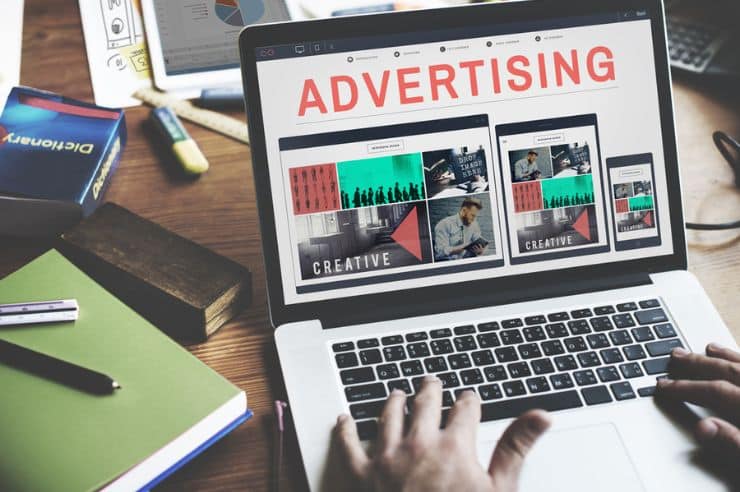Performance Max campaigns are a type of Google Ads campaign that uses automation and AI to show ads across multiple platforms, including Search, Display, YouTube, Gmail, and Maps, all within a single campaign. These are part of Google’s push for more AI-driven advertising. Instead of targeting specific keywords like traditional campaigns, Performance Max focuses on your marketing objectives. You provide the system with goals and creative assets, and Google’s artificial intelligence handles the rest.
By combining your assets with audience signals and campaign goals, Google tests different versions of your ad and shows them to people who are more likely to engage or convert. It optimizes in real time based on user behavior, location, device, and past interactions.
This allows your advertising campaigns to reach the right target audiences across various digital marketing channels. The automation also opens up new opportunities for businesses to test creative messaging and offers across multiple touchpoints without needing separate campaigns.
Understanding the Power of Automation in Google Ads
Traditional Google Ads campaigns, such as Search or Display, provide advertisers with direct control over which keywords to target, how much to bid, and where ads appear. While this level of control is useful, it can be time-consuming for businesses managing multiple PPC campaigns or juggling different advertising goals.
Performance Max simplifies this process by shifting from keyword-based targeting to asset- and goal-based automation. You don’t select individual keywords or placements. Instead, you define your campaign goals—such as sales or leads—and provide creative assets like headlines, descriptions, and videos. Google’s AI technologies then take over, optimizing delivery across all platforms to achieve better results.
This setup helps businesses with limited time or small teams manage and optimize multi-channel Google Ads more easily. It also supports smart bidding strategies by automatically adjusting your bid strategy to improve conversion rate based on your goals.
When used effectively, Performance Max allows advertisers to create ads once and distribute them intelligently across the entire Google ecosystem.
Channels Included in Performance Max
Performance Max campaigns run across the full range of Google’s ad platforms. This includes Google Search results, display ads on partner sites, YouTube videos, Gmail inboxes, and Google Maps listings. This broad coverage ensures your ads are part of a multi-channel strategy that meets potential customers where they are, whether they’re searching, browsing, or watching content.
Google Search placements help reach users with direct intent, while Display ads extend your reach across millions of websites. On YouTube, video ads can capture attention with engaging visuals and calls to action. Gmail and Maps placements are ideal for local businesses or offers tied to specific locations. This flexibility enables one campaign to cater to a range of user behaviors and stages in the customer journey.
Reaching your target audience across these varied channels makes your campaign more versatile and comprehensive compared to single-channel advertising efforts. You don’t have to create different campaigns for each platform, which makes managing your budget and message more streamlined.
AI and Machine Learning Behind the Scenes
The AI behind Performance Max campaigns processes massive amounts of real-time data to make decisions about when and where your ads should appear. These decisions are based on user behavior, location, device type, time of day, and interaction history.
This is a form of AI-driven advertising where performance improves as the system gathers more data and identifies patterns.
The system runs millions of combinations of your creative elements, evaluates which combinations perform best, and allocates your budget accordingly. Over time, the AI enhances your campaign efficiency by minimizing waste and targeting ads that lead to higher conversion rates. This is the core of optimizing ad performance with artificial intelligence—learning what works and adjusting automatically.
Bids, ad placements, and creative combinations are optimized dynamically. The use of smart bidding ensures that your campaign adjusts to changing conditions and audience behavior in real time, maximizing results without constant manual updates.
How to Set Up a Performance Max Campaign
Your Performance Max setup begins with selecting a goal that aligns with your business objective, such as purchases, sign-ups, or calls. Next, you’ll create ad groups, also known as asset groups. Each group includes the creative elements for Google to build and test ads.
To enhance performance, you also submit audience signals that describe the people most likely to convert. Google uses these as hints to begin optimizing. These signals, combined with smart bidding and real-time adjustments, enable the system to start learning immediately, rather than taking weeks to gather sufficient data from scratch.
Choosing the right goal is essential because it informs how Google prioritizes your budget and traffic. For instance, if your goal is online purchases, the system will be more aggressive with placements and bidding when it detects someone who is likely to make a purchase.
Building Asset Groups That Convert
In each asset group, include multiple versions of headlines, descriptions, images, and videos. This helps the system test combinations to determine which one performs best. These ads can appear on Google Search, YouTube, Gmail, or as display ads, depending on the match.
Good creative assets make a difference. Your messaging should align with the product or service being offered, and the visuals should convey a professional appearance. Link to a specific landing page for each asset group to ensure consistency and increase your conversion rate.
Asset groups should be structured based on themes, such as specific services, audience segments, or product categories. This structure enhances message clarity and facilitates audience targeting. The better your ad group organization, the easier it becomes for the system to identify patterns in performance.
Using Audience Signals Effectively
Audience signals include customer lists, website visitors, and people searching for similar services. These help Google’s artificial intelligence get your campaign off to a strong start. Remember, audience signals don’t restrict who sees your ads—they guide the AI to speed up learning.
Custom segments based on interests or behaviors are especially helpful in identifying lookalike users. For instance, if you have a list of high-value customers, uploading that list enables the system to identify users with similar online behaviors, thereby improving efficiency.
This is where smart use of digital marketing tools pays off. Audience signals let you influence the AI without overcomplicating your campaign setup. Use insights from your social media or email marketing campaigns to guide your initial inputs.
Measuring Success Without Keywords
Unlike keyword-based campaigns, Performance Max focuses on outcomes. Success is tied to your campaign goals, such as conversions or return on ad spend. Because there are no specific keywords or placements to manage, reporting looks different from what you may be used to in Google Ads.
Still, there’s plenty of valuable data you can review to understand how your campaign is performing and where to make improvements.
The reporting focuses on overall performance, asset ratings, and audience insights, providing a broader view of your advertising efforts.
Key Metrics to Monitor
Key performance indicators include total conversions, conversion value, and ROAS. These show how much value your Google Ads campaign is driving. Google also scores your assets as best, good, or low, helping you identify areas for improvement.
Pay close attention to impression share, which indicates how often your ads appear compared to how often they could occur. This is especially important in competitive PPC campaigns where visibility is key.
Also consider engagement metrics, such as click-through rate and view-through conversions. These help you understand whether your creative is attracting attention and nudging users toward action.
Tools That Help Track and Analyze
Google Ads reporting is the first place to review your campaign. For more detailed analysis, connect your data to a platform like Optmyzr. These help you track performance trends and adjust your strategy accordingly.
Using these tools, you can isolate high-performing asset groups, detect drops in conversion rates, and analyze campaign trends over time. This makes it easier to optimize advertising campaigns and maximize your budget’s effectiveness.
When to Use (or Avoid) Performance Max Campaigns

Performance Max works best when your campaign goals are clear and you can supply strong creative assets. It also requires accurate conversion tracking for proper optimization.
Understanding your internal resources is also essential. Do you have the time to gather quality images, write engaging headlines, and maintain updated product feeds? If so, Performance Max can be a strong option.
When Performance Max Campaigns Work Well
These campaigns are great for businesses with several advertising goals or rich content to promote. They suit e-commerce stores, local service providers, and any business with the ability to create ads across different formats.
They also benefit businesses already active on social media or other digital platforms, allowing them to scale faster through automation. For lead generation, Performance Max can deliver strong results if your forms and landing pages are optimized.
Because the system works better with more signals, it’s a great fit for brands that already have Google Analytics set up, run remarketing ads, or maintain well-segmented email lists.
When Performance Max Might Not Be the Best Fit
Avoid using Performance Max if your offer is highly niche and requires precise keyword control. If you don’t have substantial assets, working conversion tracking, or a clear bid strategy, the campaign may underperform.
Performance Max is also not ideal for testing new ideas without historical data. Like other automated ad campaigns, it needs time and structure to work well. Businesses that require exact placement control or detailed targeting settings may also find it frustrating.
Best Practices for Performance Max Campaigns
Success depends on a thoughtful setup. Feed the system high-quality creative and link each asset group to a specific landing page. Keep messages focused and test new assets when performance starts to dip.
Avoid vague goals or weak tracking setups. Google’s AI-driven system performs best when fed solid, organized input.
Test different messaging angles, seasonal offers, or visual styles to see which resonates best with your audience. Performance Max provides the flexibility to experiment across channels with minimal overhead, as long as your creative content remains fresh.
When to Use Performance Max vs. Search Campaigns
Search campaigns help target specific queries. Performance Max is more exploratory, using automation to uncover new conversion paths. When combined, they form a complete strategy: Search campaigns handle direct intent, while Performance Max expands reach and supports discovery.
This is especially helpful in blended digital marketing strategies where both types of ads can support each other. In some cases, you may also want to compare conversion rate performance between the two to guide your budget allocation.
Pros and Cons of Performance Max
Like any advertising solution, Performance Max campaigns offer both advantages and drawbacks. Understanding the benefits and potential challenges of using this AI-driven format can help you decide if it aligns with your business goals and internal resources.
Pros
- Runs across all Google platforms: Automatically distributes ads across Search, Display, YouTube, Gmail, and Maps, giving you broad visibility without managing separate campaigns.
- AI-driven optimization: Leverages Google’s artificial intelligence to adjust bids, placements, and messaging in real time, improving efficiency and campaign performance.
- Simplified setup: Compared to setting up and managing multiple campaigns for different platforms, Performance Max requires far less manual effort to get started.
- Centralized asset management: Allows you to create ads once and apply them across all placements, helping maintain consistent messaging while saving time.
- Smart bidding included: Built-in smart bidding strategies help stretch your budget by prioritizing users more likely to convert.
Cons
- Limited transparency: You won’t see detailed information about which search terms, websites, or YouTube channels your ads appear on, which can be frustrating if you’re used to full control.
- Creative quality matters: The campaign relies heavily on the strength of your headlines, images, videos, and landing pages. Poor creativity can lead to weak results.
- Initial performance may vary: New campaigns often go through a learning period that can last 2 to 4 weeks. During this time, results may be inconsistent.
- Requires regular updates: Without fresh assets, ads can become repetitive, causing creative fatigue and declining engagement over time.
- Not ideal for niche targeting: If your business requires precise targeting, Performance Max may not provide the level of control you desire.
Consider these pros and cons as you assess whether Performance Max aligns with your broader marketing strategy. When used strategically, it can streamline your advertising campaigns and uncover new growth opportunities, but it works best when supported by strong inputs and clear performance goals.
How Much Should You Budget for Performance Max?
Begin with a daily budget that aligns with your business objectives. For small businesses, a daily budget of $30 to $50 is a good range. If your goal is aggressive growth or you have an extensive product catalog, consider a higher starting point.
Monitor early results, then increase gradually. Remember that optimizing ad performance takes time and data. Avoid overreacting to short-term dips during the learning phase. Use consistent benchmarks and adjust only when trends are clear.
Pairing Performance Max With Other Campaigns
You can run Performance Max campaigns alongside Search, Shopping, or remarketing campaigns. For example, use branded search ads to protect your brand name and pair them with Performance Max for a broader reach.
Display ads and video campaigns can support remarketing, helping to re-engage people who clicked but didn’t convert. This layered approach is particularly effective in digital marketing plans that prioritize efficiency and scalability.
Pairing also allows you to balance control and automation. Use Search for direct response targeting and Performance Max to automatically discover new customer segments.
Ready to Make Performance Max Work for You?

Performance Max campaigns give you a flexible and automated way to run multi-channel Google Ads campaigns. With the right assets and clear goals, this type of campaign can deliver strong results through AI-driven advertising.
But getting the most out of AI technologies and Google’s automation takes more than just turning it on. You need the proper creative setup, innovative approach, and clear performance goals. That’s where Oyova can help.
Need better results from your advertising campaigns? Let’s talk. Whether you’re launching your first Performance Max campaign or fine-tuning your existing Google Ads strategy, Oyova is here to guide you.
Our team helps businesses improve conversion rates, develop effective bid strategies, and optimize digital marketing efforts with clear, measurable results.
Our Awards












